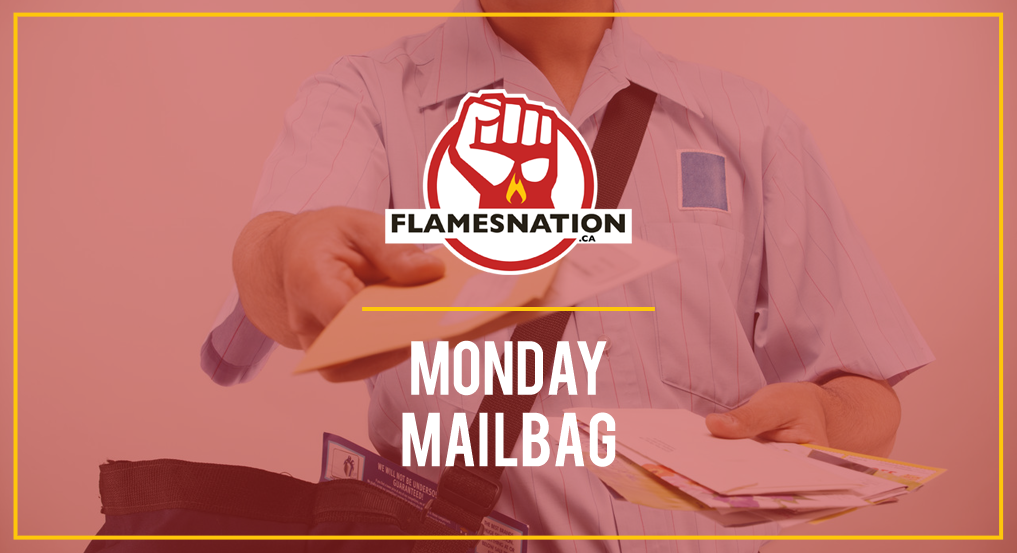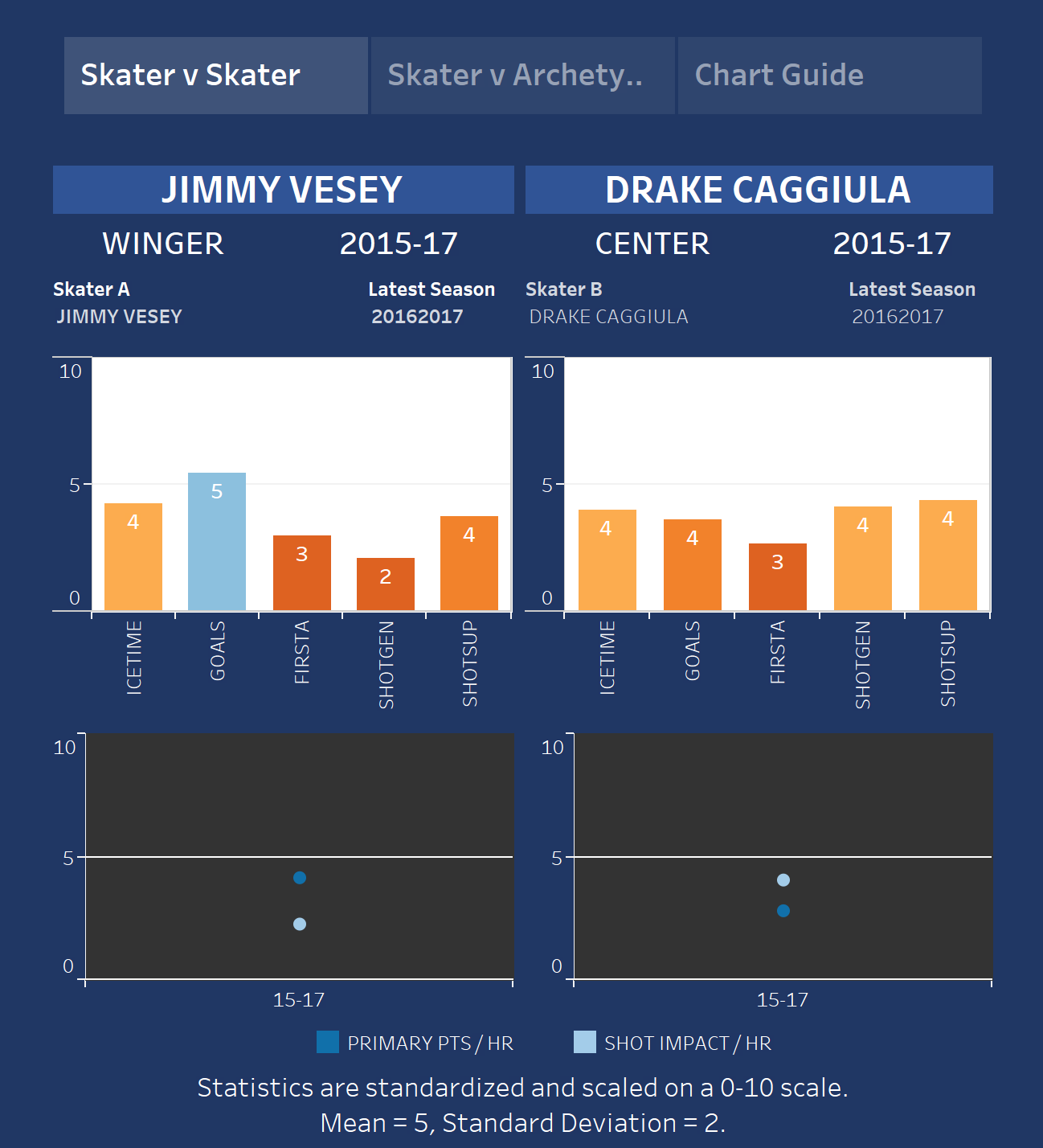FN Mailbag – Have the Flames improved enough?

By Kent Wilson
6 years agoThis is the year the Calgary Flames’ contention window opens.
The organization has assembled a strong core of young talent, with a handful of guys on the way. Mark Giordano is still well above average at 33, while Sam Bennett (21), Sean Monahan (23), Johnny Gaudreau (24), Dougie Hamilton (24), Micheal Ferland (24), T.J. Brodie (27), Travis Hamonic (27), and Mikael Backlund (28), are all at or near peak age.
So the time to try to win is now. The rebuild has progressed to the degree that expectations of the players and management must be raised beyond merely competing for a playoff spot. We can see this reality reflected in Brad Treliving aggressively plugging roster holes by spending future assets this summer. The Flames’ focus has reasonably shifted from the distant horizon to what’s in front of them.
But will it be enough?
It’s less about how the Flames finished last year and more about the acceleration of their improvement. Here’s how their possession rate has risen over the last three seasons:
- 2014-15: 44.46% (28th)
- 2015-16: 46.12% (21st)
- 2016-17: 50.56% (10th)
To put that in perspective, two seasons ago the Flames’ total attempted shot differential was -828. This past season, it was +76. That’s a +900 shot swing over the course of three years, which is substantial. Keep in mind, Calgary’s first four-to-six weeks were putrid (CF% of 47%) and not at all indicative of the team through the rest of the season. In fact, the Flames managed the sixth best score adjusted possession rate in the league between January and March 2017.
Another 2% jump would likely put them inside the top five teams in the league in terms of possession. That doesn’t guarantee anything, but teams with a CF% at or above 52% tend to make the playoffs over 70% of the time. Absent a major defect (like goaltending) they tend to be contenders or favourites.
In my previous Big Gainers series, I showed how a team can go from basement dweller to contender in a relatively short period of time. In my investigation, a “big gain” was more likely if a club could accomplish these four things: draft elite talent, win a big trade or two, develop internal depth, and add a strong coach. We’ll go over this more in detail later, but the Flames seem to check all of the boxes.
It’s difficult to be certain, but… probably better. By replacing Dennis Wideman and Deryk Engelland with Travis Hamonic and Michael Stone, Calgary’s blueline should, in theory, be drastically improved. A more balanced backend means Glen Gulutzan should have a lot more flexibility when it comes to managing his matchups. Oh, and assuming GG learned his lesson, Troy Brouwer won’t spend three-quarters of the season sinking the results of guys like Sam Bennett, Kris Versteeg, and Sean Monahan.
That said, there are two wild cards in the equation:
- Internal development. Can guys like Brett Kulak, Matthew Tkachuk, Bennett, and Ferland take a step forward this year? Calgary’s youth could go a long way to turning a pretty good roster into a very good one.
- Can goaltending hold up? Mike Smith and Eddie Lack are both gambles for one reason or another. There is no sure thing between the pipes, despite the assets used to re-populate the position. As such, we can’t really be sure if the Flames’ puck stopping will be adequate or not.
If I was Brad Treliving, I’d still be in the market for a quality, depth forward. Jussi Jokinen would have been a good target, but he was recently signed by the Oilers, unfortunately. Unless the Flames want to re-enter the trade market with their dwindling future assets, they are left surveying a landscape of mostly flawed or older options like Shane Doan, Thomas Vanek, and Jaromir Jagr.
Jagr might be the best guy left, but he’s at an age where he may fall off a cliff completely (45). It also seems unlikely that he would have much interest in relocating to Calgary for a single year.
There may be nothing Treliving can do this summer to address the winger gap. The club has greatly depleted its stock of tradable assets, although they could still dip into the high-end defenders and goalies they have on hand if needed.
That said, sometimes it makes more sense to wait for an opportunity than desperately jump on less than ideal solutions. Calgary’s other option is to keep their powder dry for the rest of the offseason, bide their time, and then strike when a more appealing opportunity reveals itself.
Calgary has about $9.86M in cap space currently. The main RFAs in question are Bennett, Ferland, Kulak, and Curtis Lazar. Here’s a best guess of where their salaries will land:
Ferland: $1.85M
Bennett: $2.25M
Kulak: $0.925M
Lazar: $1.125M
Total: $6.15M
Even if I’m off by a few hundred thousand here and there, this gives us a ballpark. As you can see, Calgary probably has around $3M in cap space, give or take, to play with after their main RFAs are signed.
I seriously doubt it. It would be a weird reversal of the Brandon Bollig demotion (and Lance Bouma buyout) to turn around and put Luke Gazdic, who isn’t even as good a player, on the roster.
Even if the Flames don’t sign or trade for another veteran, they have guys like Lazar, Garnet Hathaway, Freddie Hamilton, Mark Jankowski, Hunter Shinkaruk, and Spencer Foo battling for spots on the parent club. Aside from the fact that he’s nowhere near NHL quality, I’m not even sure where Gazdic would fit on the depth chart.
Chances are, the player was signed to patrol the tough guy-strewn AHL to keep an eye on the kids as they develop.
It wouldn’t surprise me to find out the decision makers have Mark Jankowski’s name penciled into the starting lineup. Janko is turning 23 years old this September and has already had a long soak as a prospect. He led the Stockton Heat in goals (27) and points (56) last year and is NHL size at 6’4″ and 205+ pounds.
The team has a bit of logjam at C with Monahan, Bennett, Backlund, and Matt Stajan in the hopper, but that can be solved by either moving Jankowski to the LW or shunting one of Stajan or Bennett to the left side instead.
Luckily our own Christian Tiberi has already done the work for me. In this post, he names 15 historical comparisons for Foo, including Jimmy Vesey, who was the big college UFA catch last year. For a summary, consider:
- Eight of the 15 players in question never made the NHL (with Spencer Foo and Mike Vecchione as unknowns).
- The best player out of the sample is Andy McDonald, who scored at a 0.71 PPG pace in the NHL.
CanucksArmy also put Foo through their extensive prospect evaluation process this summer and found that 40% of his comparables went on to become NHLers.
For a more direct comparison, consider Jimmy Vesey and Drake Caggiula from this past season. Both were sought after NCAA free agents and both played in the NHL for their respective clubs. Vesey scored 16 goals and 27 points in a support role for the Rangers while Caggiula seven goals and 18 points in 60 games for the Oilers.
Those aren’t great results, but they aren’t terrible either. That said, both guys got run over from an underlying numbers perspective:

Yikes. Because college free agents are older and NHL teams have had to battle to “win” the right to sign them, sometimes there is internal pressure to play the guy at the NHL level right away. This look suggests neither Vesey nor Caggiula were really ready for NHL prime time last year.
That doesn’t mean Foo won’t be, but it shows how hard it can be to leap into the league directly from college.
Recent articles from Kent Wilson




